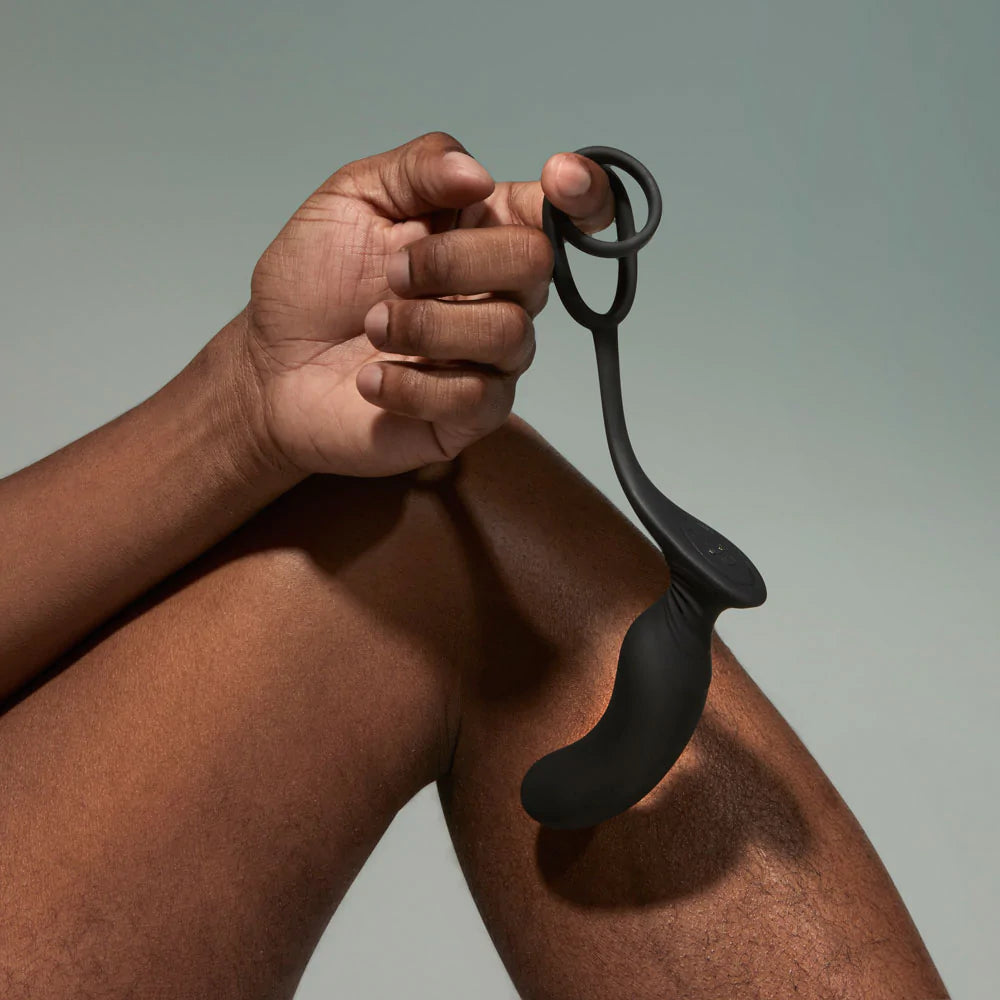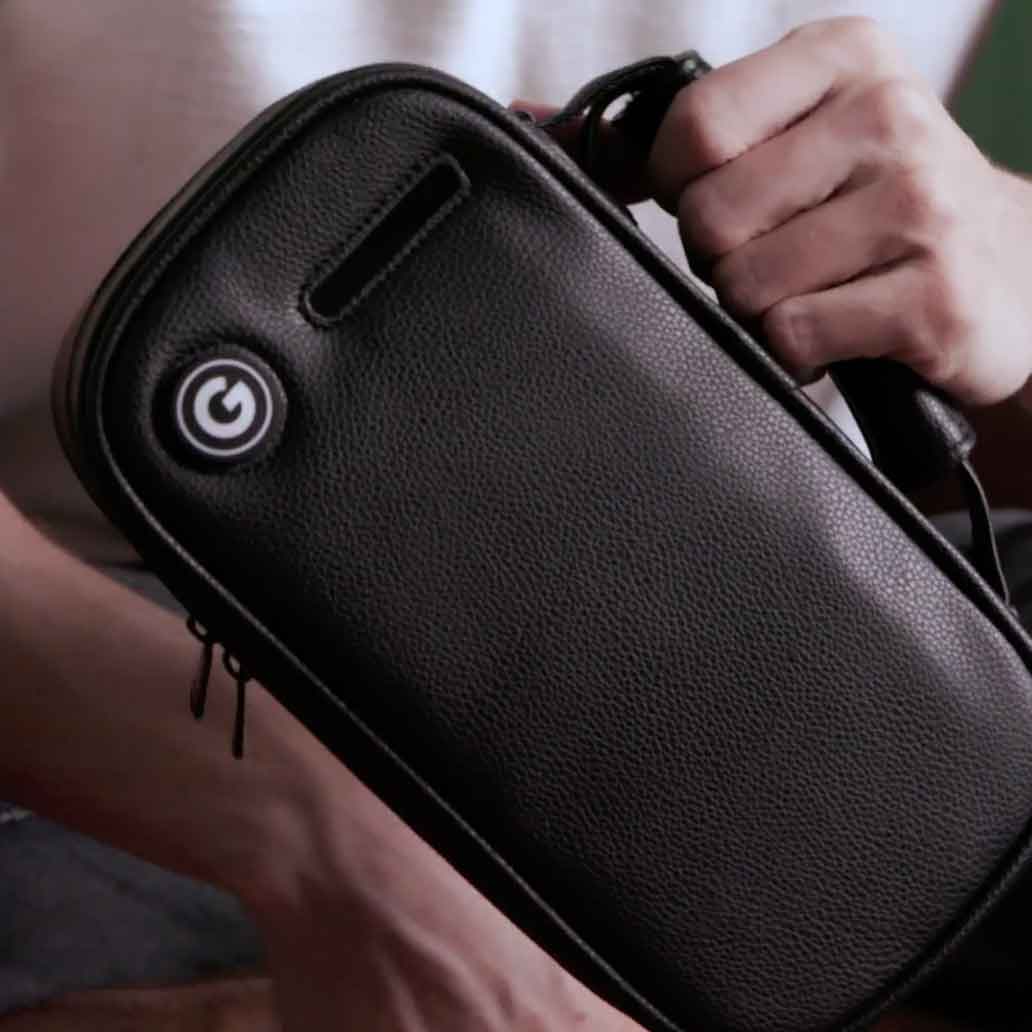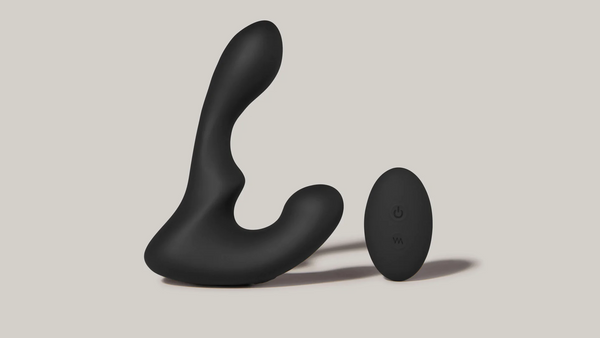Get our Beginner's Guide to Prostate Massage and 15% off your order.

The prostate may be a relatively small gland, but it can cause a lot of trouble if you don’t pay attention to it. When it’s working well, it can be a source of pleasure while performing crucial jobs in the body. When it’s not working correctly, it can be vulnerable to health issues, including nonbacterial prostatitis.
To help you identify the problem, we’ve got a primer on the disease, including potential symptoms, causes, and treatments.
Prostate Basics

The prostate is a part of the male reproductive system, so only people born with male bodies will have one. It’s about the size of a walnut and sits inside the body at the base of the penis, about halfway between the bladder and rectum.
The prostate performs a few jobs, but its most important one is to help produce part of the fluid that makes up ejaculate. It also contains muscles that push semen into the urethra and then out of the body — without the prostate, having an orgasm becomes a lot more complicated.
Just underneath the prostate is the pelvic floor. These muscles span the entire bottom of the pelvis, supporting the pelvic organs — the bladder and bowels in AMAB (assigned male at birth) people.
The pelvic floor helps with urinary, bowel, and sexual function, although we tend to talk about it more in reference to those born female. No matter what body you were born into, your pelvic floor is crucial to your quality of life.
What Is Prostatitis?

Like every other body part, the prostate is vulnerable to multiple health issues. One of those issues is prostatitis, an often painful condition where the prostate becomes inflamed and swollen.
Prostatitis is the most common urinary tract issue for men under 50 and the third most common for those over 50. That means between 10 and 15 percent of people with male bodies will experience some form of prostatitis during their life.
There are four different types of prostatitis, although we’re just going to focus on one today.
In addition to nonbacterial prostatitis, the prostate can also develop the following forms:
- Acute bacterial prostatitis - This form of prostatitis is caused by bacteria. Acute bacterial prostatitis (ABP) symptoms include fever, chills, burning with urination, or trouble passing urine, and they often come on quickly. If you notice any of these symptoms, seek medical attention right away.
- Asymptomatic inflammatory prostatitis - People who develop asymptomatic inflammatory prostatitis don’t have obvious symptoms. It is often diagnosed due to other health conditions or during regular screening.
- Chronic bacterial prostatitis - Like ABP, chronic bacterial prostatitis (CBP) is caused by bacteria. However, the symptoms of CBP (frequent urination, painful ejaculation, burning with urination, and pain in the genitals and bladder) come on far more gradually and happen without fever or chills.
What Is Nonbacterial Prostatitis?
Nonbacterial prostatitis is a chronic issue that involves the painful swelling (inflammation) of the prostate gland. It’s referred to as nonbacterial because it is not caused by bacteria, unlike other forms of prostate inflammation.
In rare cases, nonbacterial prostatitis is caused by a less common type of bacteria that doesn’t respond to medication, which is why it still gets that label. Most chronic prostatitis is a nonbacterial form.
Interestingly, it’s unknown whether the prostate is the actual source of the pain (and related symptoms) or is just an innocent bystander.
What Causes Nonbacterial Prostatitis?
While every situation is different, there are a few common causes of nonbacterial prostatitis.
- Previously having been diagnosed with bacterial prostatitis.
- Frequent bike riding
- Issues with urination that cause urine to back up into the prostate
- Chemical irritants
- Lower urinary tract nerve issues
- Parasites
- Issues with the pelvic floor muscles
- Sexual abuse
- Viral infection
Symptoms of Nonbacterial Prostatitis
How will you know if you have nonbacterial prostatitis? The type of pain and how long it lasts is one of the hallmark signs of the disease, but here are a few other symptoms that should be a red flag to trigger you to call your doctor:
- Blood in your semen
- Blood in your urine
- Frequency or urgency of urination
- Pain in the lower back, genitals, or urinary system (especially after urinating or ejaculating)
- Pain or burning when urinating
- Pain when having a bowel movement
- Pain when ejaculating
- Problems with urinating (like difficulty starting your stream or needing to strain to urinate)
- Sexual dysfunction
If you notice any of the above symptoms, schedule an appointment to be evaluated as soon as possible.
How Is Nonbacterial Prostatitis Diagnosed?
Some doctors feel comfortable diagnosing nonbacterial prostatitis by evaluating your symptoms alone, while others may prefer to do more tests.
Regardless, getting a nonbacterial prostatitis diagnosis starts with discussing what symptoms you’ve been having and how long you’ve had them. They’ll also want to perform a prostate examination, where they insert a gloved fingertip (with plenty of lube) into the rectum to look for swelling or other abnormalities.
They may ask for a urine sample as well to make sure you don’t have a urinary tract infection or other bacteria in your urine.
Further testing for prostatitis may include:
- A prostate ultrasound involves inserting a probe into the rectum that uses painless sound waves to look for abnormalities.
- Urine or blood tests to look for or rule out sexually transmitted infections (STIs)
- Studies to evaluate your urinary flow (urodynamic testing like uroflowmetry or postvoid residual measurement).
- Further urinary tract evaluation, including cystoscopy, to take a better look at the inside of the urethra and bladder.
- Biopsy to look more closely at pathology and rule out the possibility of prostate cancer.
What Can You Do About Nonbacterial Prostatitis?

Treatment for nonbacterial prostatitis needs to be ordered and prescribed by your healthcare provider. Your doctor can do this in several ways, but each case is different and will be managed differently.
Because of the chronic nature of nonbacterial prostatitis, the goal is to manage the symptoms instead of “cure” it.
- Long-term antibiotics - Although bacteria do not cause nonbacterial prostatitis, your doctor may want you to try a few rounds of antibiotics to rule it out. However, if they’re not helping, they will likely be discontinued so that you don’t become resistant to them.
- Alpha-adrenergic blockers - These medications help to relax the prostate muscles, but they don’t have a high success rate and usually take more than a month to start working.
- OTC medications - Nonsteroidal anti-inflammatory drugs (NSAIDs) like ibuprofen, naproxen, or aspirin may also help relieve some of the symptoms of nonbacterial prostatitis.
- Muscle relaxants - To help reduce the number of painful spasms in the pelvic floor, your doctor may also prescribe muscle relaxants like cyclobenzaprine or diazepam.
- Stool softeners - If your nonbacterial prostatitis is causing pain, discomfort, or difficulty with having a bowel movement, stool softeners may be able to help.
- Other symptomatic treatments - Warm baths, acupuncture, dietary changes, and pelvic floor therapy can also help treat or manage nonbacterial prostatitis symptoms. Prostate massage may also be able to help.
- Surgical treatment - If the condition continues to be painful or does not respond to other treatments, your doctor may recommend surgical intervention. Transurethral resection of the prostate gland is usually only recommended for older patients, as it can cause impotence, incontinence, or sterility.
How To Cope With Nonbacterial Prostatitis
Although there are plenty of potential treatments to at least manage the symptoms of nonbacterial prostatitis, it is still considered a chronic condition. Dealing with a chronic condition can be hard on you emotionally, especially one that can be painful.
While you may be unable to “cure” it, there are ways to feel more in control of your diagnosis and symptoms. Some people find it helpful to do pelvic floor therapy, either on their own or with a pelvic floor therapist.
Pelvic floor therapy can strengthen the pelvic floor, reducing pain and urinary and sexual dysfunction issues.
Don’t forget to address your mental health, though. Chronic health conditions can lead to anxiety and depression because feeling out of control doesn’t make you feel good! You may want to look into support groups, talk therapy, or talk to your doctor about possible medications.
The good news is that having prostatitis has not increased your risk of developing prostate cancer later in life. You should still have your regular prostate checks, but you don’t have to worry as much about that specific long-term repercussion.
What About Prostate Massage?

While there isn’t much solid scientific evidence to back it up (yet), many people swear by prostate massage to help release backed-up fluids in the prostate. Plus, prostate massage can lead to the infamous P-spot orgasm, described as a full-body, toe-curling experience.
People experiment with prostate massage with either manual stimulation (AKA you or your partner’s fingers) or a prostate massager. It may take time to get comfortable with prostate stimulation, especially with your fingers, but it’s well worth it!
Prostate massagers can definitely help with your comfort level because they are designed to reach the exact spot. If you’re struggling with finding or stimulating your prostate, try the Tomo Come Hither Prostate Massager (with plenty of lubrication).
When you first stimulate the prostate, you may feel like you have to urinate. Remember, the prostate is located by the bladder, so stimulating it feels similar. If you’re not using a prostate massager, try pressing on it like a doorbell. If you are using one, experiment with different speeds until you find the right one to push you over the edge.
Regardless of which prostate massage technique you use, go slowly. You’re learning an entirely new technique, and anything involving the anus can initially feel awkward. Give yourself time and patience, and don’t push it; inserting anything into the anus too quickly or without enough lube can cause discomfort, pain, or even tearing.
Can You Prevent Nonbacterial Prostatitis?
Nonbacterial prostatitis can just happen, but there are also ways that you can reduce your risk of developing the condition.
- Protect yourself against STIs - Sexually transmitted infections can contribute to inflammation and may trigger nonbacterial prostatitis. Getting tested regularly (before and after any long-term monogamous relationships), using condoms with any new sexual partners, and having a line of open, honest communication with anyone you’re sleeping with are always important. Still, they can also help reduce the risk of prostate issues later in life.
- Perform regular prostate checks - Knowing your anatomy is also key to maintaining your prostate health. Part of that involves regularly checking your prostate manually. Start by washing your hands and filing your nails down. Using plenty of lube, insert a finger into your anus an inch or two. You’ll want the front of your hand to face the front of your body. When you locate your prostate, it will feel more soft or rubbery than the rest of your rectum. You’re looking for anything that feels abnormal, large, or bumpy.
- Have regular prostate exams - In addition to checking your prostate yourself, you’ll also want to see your doctor for regular prostate exams. Most people will do this as part of their annual wellness exam, but make sure you schedule an appointment if you notice anything unusual during your self-checks. Your doctor will likely do a manual exam, especially if you’re over the age of 40, and may also want to order bloodwork to check your prostate function (a test known as a PSA or prostate-specific antigen).
In Summary
Nonbacterial prostatitis can be tricky to manage, but you don’t have to go it alone. Work with your doctor to discuss your options, and don’t be afraid to experiment with prostate massage.
Knowing your body and what is and isn’t normal for you can help you maintain your prostate health, so you can get help sooner if anything isn’t right. Your prostate may be small, but it’s definitely mighty — so take care of it!
Sources:
How does the prostate work? | NCBI Bookshelf
Prostatitis: Inflammation of the Prostate | NIDDK
Prostatitis - nonbacterial | MedlinePlus Medical Encyclopedia












